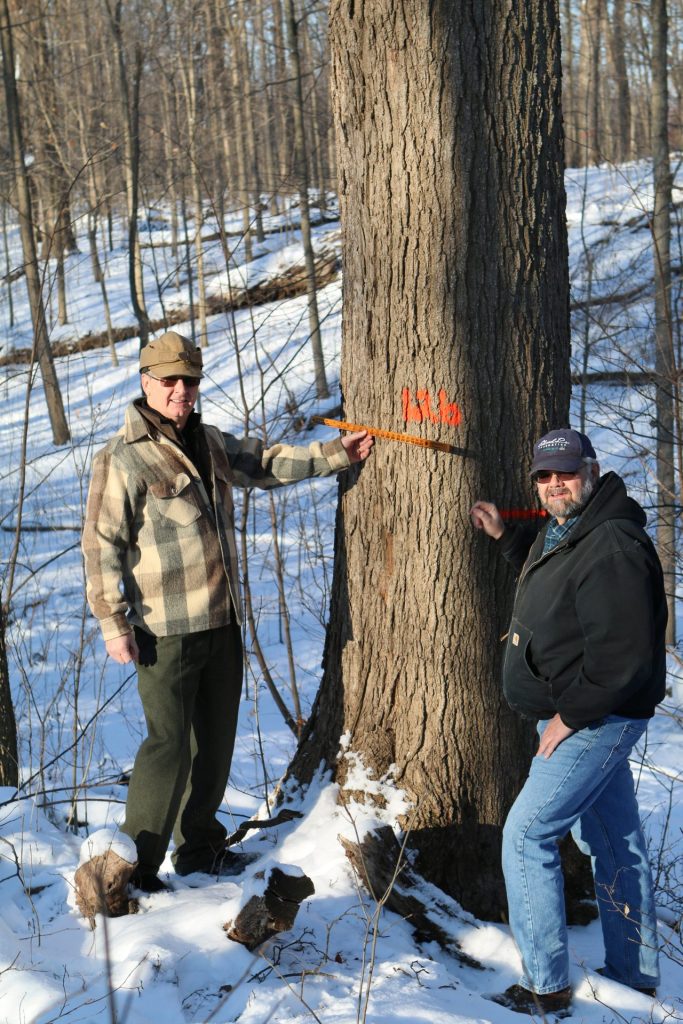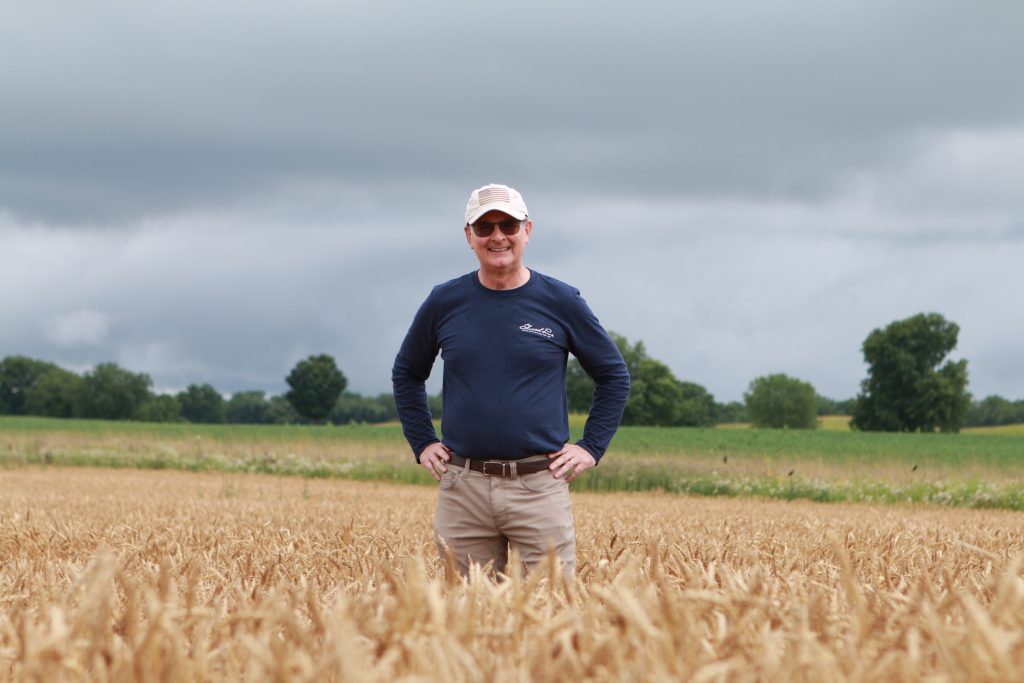Right now the foundation’s land stewardship team is gearing up for our biennial timber sale. If you haven’t visited Big Rock Valley, our headquarters property in southwest Michigan, you might not realize that it sits on 2,000 acres of land, with about one-third of that comprised of woodland. The majority of this (about 500 acres) is managed for environmental diversity — which makes our harvesting practices quite different from forests that are managed for commercial timber production.
Environmental diversity means that we’re striving for healthy trees in a variety of sizes and species — ones that will enhance the habitat for other plants and wildlife. For example, in addition to high-value species like maple, walnut and oak, we also encourage such species as hornbeam, hackberry, sassafras and blue beech, which are considered by many foresters to be “weed trees.” (We also have 125 acres of woodland that is managed for old growth, which I’ll discuss in an upcoming blog.)
The biennial harvest plays a major role in controlling the types of trees that grow at Big Rock Valley, explains Jay Suseland, the foundation’s ground maintenance manager. “Our environmentally diverse woodland has been divided into 20 units, which are harvested on a rotational basis, with each unit harvested every 12 years.”
To determine what needs to be thinned, Chris Egolf, our consulting forester, evaluates the units, looking for health issues or what needs to be done for regeneration. “For example, there may be spacing issues to resolve, such as trees growing too closely and competing for resources,” Jay says. “We look for young trees of certain species that we want to encourage, and may take out an older tree so younger ones have better opportunities to grow.”

Trees to be included in the sale are numbered and banded so loggers can inspect them prior to bidding. The banding also ensures that they take the right trees. We then provide a breakdown of species included in the sale and estimate the board footage per species.
Loggers bid on trees as a total package, which includes 241 trees this year. (Since we began harvests in 1998, we’ve averaged about 300 trees per sale, from a high of 607 to a low of 85. It all depends on what’s happening in the stands.) Generally, we go with the highest bidder, but we also consider their reputation as loggers, such as whether they take precautions not to disturb the natural habitat while harvesting the trees.
After the sale is completed and the buyers have harvested the trees, Jay’s team revisits the units for a timber-stand improvement (TSI) marking. The TSI is another key component in managing for diversity, he explains. “This is where we remove trees that need to come down but weren’t included in the timber sale because they are considered low quality or too small.”
The trees are either cut down or girdled to create regeneration openings, which are also critical for diversity. “In Michigan, maples often become a dominant species because they can withstand shade,” Jay explains. “To encourage sunlight-loving species, such as oaks, cherry and tulip poplar, you need to create larger openings so you get full sun.”
In addition to thinning and harvesting, some other practices we use for environmental diversity include:
- Allowing logging debris and trees damaged from storms to remain in the stand. As the material decays, it provides important habitat for insects and wildlife. It also helps control soil erosion and holds moisture in the soil.
- Maintaining many standing snags and hollow trees to provide food and den sites for wildlife.
- Performing prescribed burns (in predominantly oak woodlands) to help reinvigorate the stand and control invasive species.
- Protecting sensitive areas such as wetland, streams, creeks and habitat of rare or threatened species during forestry activities.
To document the efforts of our woodland management, the foundation has created four demonstration plots. Each plot measures about 13 acres and illustrates four types of management practices: environmental diversity, old growth, high-value commercial timber production and a hands-off, no management approach. To track the health and growth rates of these trees, measurements are taken periodically.
The demonstration plots were started in 2002, which hasn’t been long enough to see major trends in data. “We hope to show that managing for environmental diversity is a better practice in the long run than managing just for high-value timber varieties,” Jay says. “After all, we don’t know what the future holds. All trees are susceptible to diseases and potential changes in climate. These and other factors may determine what species survive going forward. Who knows what tree could be considered the most valuable species in 60 years?”
Published 1/24/2018
